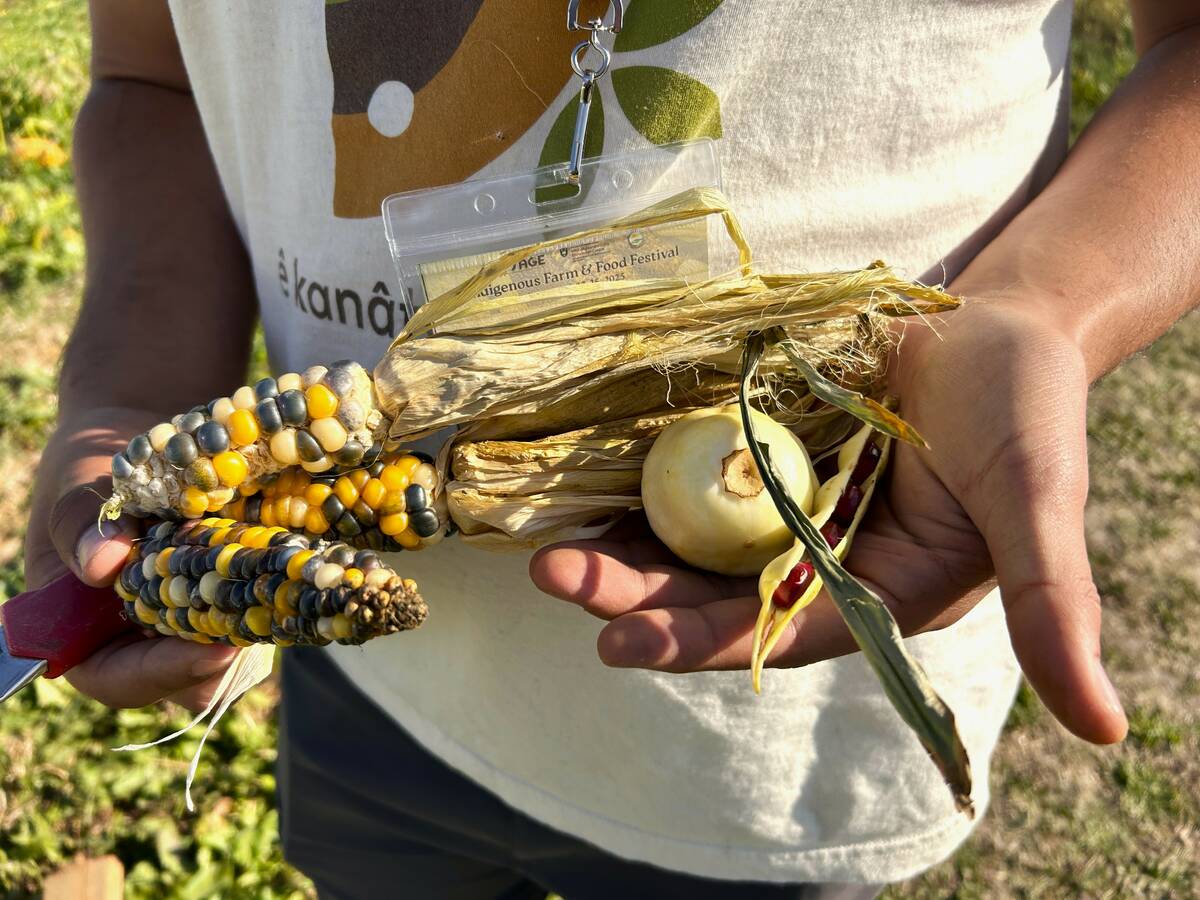With the melt in full swing, it’s time to check whether winter cereals are still viable.
Lionel Kaskiw, a crop production extension specialist with Manitoba Agriculture, says one of the main concerns regarding survival is the temperature at crown depth. It’s critical for winter wheat, says Kaskiw.
“Soil temperatures need to be -20 C or above during the winter months to be successful for overwintering.”
Read Also

Regenerative practices meet Indigenous knowledge on the Prairies
What do traditional Indigenous agricultural practices and regenerative agriculture have in common? Quite a lot it turns out.
Snow cover is usually sufficient to insulate soils. Kaskiw says most parts of the province had snow cover so that shouldn’t be an issue. But crops aren’t out of the woods yet. As the snow melts, a cold snap could cause problems.
“We’ve been lucky so far. Our evenings haven’t gotten too cold,” says Kaskiw. “The biggest worry we could have is if we start getting some night temperatures, returning to the -10 C to -15 C range.”
Once the winter crop breaks dormancy, it is more susceptible to freezing temperatures.
That said, when winter wheat breaks dormancy and starts to throw new roots, it’s a strong sign that the crop has survived the winter.
While new roots might not be showing yet, Kaskiw says now is the time to poke around the fields to see what’s happening.
There are two simple methods to check crop survival. The first is what Kaskiw called “the bag test.”
It involves digging up some plants, rinsing off the seedlings, and clipping roots below the crown and about one inch above the crown. The crown should then be placed in a Ziploc bag and sealed with air inside. Once sealed, the bag should be stored at room temperature and the contents should be rinsed every two days.
“After about six days, you should see some new growth,” says Kaskiw.
If there isn’t new growth, the test was either done incorrectly or the plants aren’t going to make it. But Kaskiw says it’s best to be doubly certain.
“I think it would be to your advantage to try the test again,” he said.
The other test involves digging up some plants while leaving the soil ball intact. The plants should be brought inside to a warm and sunny area. After seven to 10 days, the soil should be washed off the roots, and healthy white roots should be visible coming out of the crown. “That’s going to tell you right there if the plant has made it,” said Kaskiw.
But, once again, he says it’s important to be certain.
“If you do go out too early and the ground is still fairly frozen, it’s not going to be easy to dig out a sample,” he says. “Make sure you’re getting a good sample out of the ground and not wrecking the plant as you bring it up because you can do damage that way. And that’s going to affect what kind of results you get.”
If nothing else, Kaskiw says the tests get people out in the field.
“It also gets you to see what’s going on with some of the weeds out there and whether there are some winter annuals that you might need to deal with later on.”
In terms of a successful plant stand, the goal for winter cereals is around 20 plants per square foot, but Kaskiw says that’s not a hard and fast rule.
“We have seen a lot of good stands come from 10 to 15 plants per square foot,” he said. “Winter wheat has the ability to produce a lot of tillers, and it can compensate for not having the optimal plant count.”
When scouting a field to determine viability, it’s tricky when there’s uneven distribution.
“You’ll run into areas where you’ll have 20 or more plants per square foot, and in other areas, you might be down to eight to nine plants, maybe even less,” said Kaskiw.
In this kind of scenario, a farmer has to make a judgment call. If the damaged areas dominate the landscape, a farmer may need to admit defeat, “but if damage is limited to small areas in the field, winter wheat can definitely compensate and can still produce a good crop.”
Kaskiw cautions farmers not to make rash decisions.
“I always like to say, you don’t need to make a decision on your winter wheat crop until you’re probably halfway done seeding your cereals in the spring. This way, you’ll have given it the best chance to see how it’s going to turn out.”
If the crop can’t be saved, there are other factors to consider.
Kaskiw says winter wheat is frequently planted into pea or canola stubble. Because farmers likely aren’t interested in doing pea on pea or canola on canola, it’s tempting to go with another cereal crop. If so, consider the possibility of disease transfer.
“You’re going to have a lot of green material out there,” says Kaskiw.
Wheat streak mosaic is transmitted by wheat curl mites, which carry a virus that causes plant leaves to show vertical light-green stripes. The disease stunts growth and hinders plants from reaching maturity.
Planting into green material infested with those mites would transfer disease to the new crop.
“They call it a green bridge,” says Kaskiw. “The key is to destroy the old crop. You need six to seven days where there’s no green material out there before planting.”
If farmers want to avoid that, they may want to consider planting something like flax or “basically anything besides another cereal.”
















